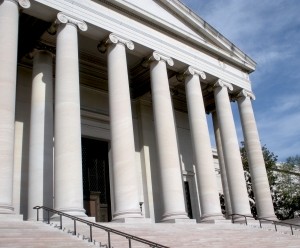The Automatic Stay in New Jersey Bankruptcy: Financial Relief During the COV-19 Outbreak
 Since the COV-19 outbreak began, more than 22 million Americans have filed for unemployment. The increase in unemployment filings have been the result of businesses of all sizes being forced to shut down entirely or significantly limit their operations. As a result, many people, both employers and employees, are seeing less income or no income at all while still being expected to pay their monthly payments such as rent, mortgage, car loan, credit card bills, and insurance. These financial obligations are especially devastating for people and businesses that were already having trouble making those monthly payments prior to the COV-19 outbreak.
Since the COV-19 outbreak began, more than 22 million Americans have filed for unemployment. The increase in unemployment filings have been the result of businesses of all sizes being forced to shut down entirely or significantly limit their operations. As a result, many people, both employers and employees, are seeing less income or no income at all while still being expected to pay their monthly payments such as rent, mortgage, car loan, credit card bills, and insurance. These financial obligations are especially devastating for people and businesses that were already having trouble making those monthly payments prior to the COV-19 outbreak.
If a person and/or business is experiencing financial trouble, has significant debt, and/or is subject to collection actions such as a foreclosure or a collections lawsuit, bankruptcy may be a potential remedy. One of the major benefits of filing for bankruptcy is the immediate automatic stay of collection actions and lawsuits.
The type of bankruptcy that may be appropriate for an individual and/or business depends on several factors. For more information on the different types of bankruptcies, check out our posts on Chapter 7, Chapter 11, and Chapter 13 bankruptcies.
The benefit that both individuals and businesses see immediately upon filing a bankruptcy petition is an automatic stay. An automatic stay is an immediate injunction that prevents a person’s or business’s creditors from continuing their collection activities. It is important to note that the automatic stay applies to a debtor’s pre-petition debts, meaning debts that the debtor incurred prior to filing the bankruptcy petition. For example, if a person’s home is being foreclosed upon, an individual may file bankruptcy and upon doing so the foreclosure action is stopped. Other collection activities that may be subject to the automatic stay include utility disconnection, car repossession, evictions, collection phone calls, and demand letters.
The practical purpose of the automatic stay is to allow the person or business time to focus on the bankruptcy action and re-paying the debts which are legally required to be paid back pursuant to the bankruptcy. It allows the debtor to “breathe a sigh of relief” and not have to deal with the constant collection activities that the person or business was stressing over the past several weeks or months.
However, it is important to remember that the automatic stay is not without limitations. While an automatic stay generally lasts for the duration of a bankruptcy case, secured creditors may be entitled to file a motion for relief from the automatic stay. This would allow secured creditors to continue their collection activities on secured collateral, such as a home on which there is a mortgage, while the bankruptcy is still pending. There are several reasons why creditors may request relief from the automatic stay including but not limited to a showing that the secured creditor is under-secured. Further, an automatic stay does not relieve an individual’s or business’s legal obligation to pay their current debts, such as continuing rent or car payments. It only suspends creditors’ ability to collect against those debts.
COV-19 is forcing people and businesses to make tough financial decisions. At McLaughlin & Nardi, LLC, our New Jersey bankruptcy attorneys want to help advise you through these difficult times and discuss questions that you may have such as whether bankruptcy is appropriate, what type of bankruptcy should you file, and what the benefits of filing bankruptcy are. We also have considerable experience negotiating with creditors and defending lawsuit in both New Jersey state and federal court. Therefore, if you have any questions or would like to discuss the information above further without one of our New Jersey bankruptcy attorneys, please fill out the contact form on this page or contact us at (973) 890-0004.
 New Jersey Lawyers Blog
New Jersey Lawyers Blog

